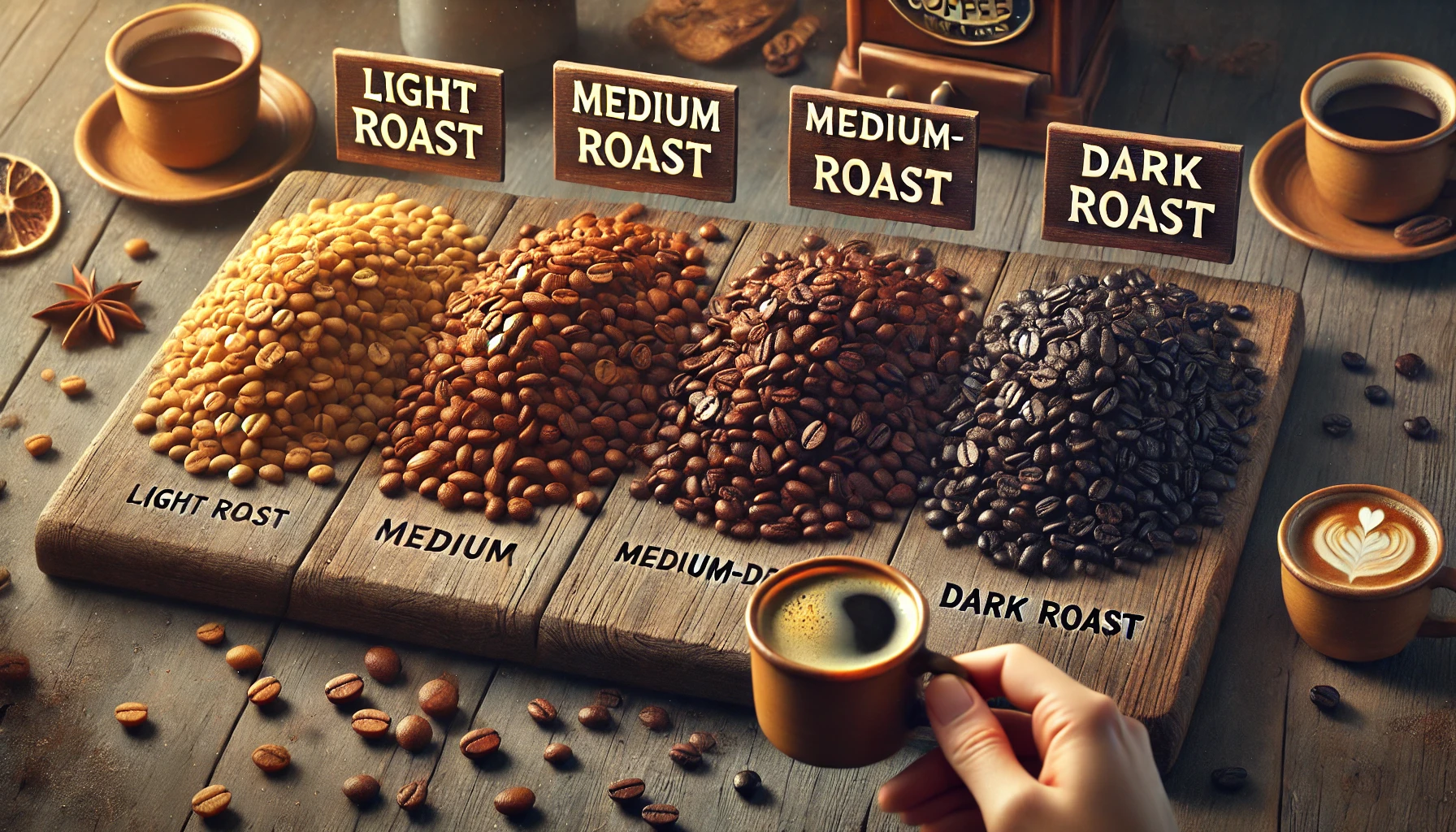If you’ve ever been curious about why one cup of coffee tastes light and fruity while another tastes bold and chocolaty, the answer often lies in how the beans were roasted. Roasting is one of the most important stages in coffee production—it’s where raw green beans are transformed into the flavorful, aromatic beans we grind and brew.
In this beginner-friendly guide, you’ll learn how coffee roasting works, how different roast levels impact flavor, and how to choose the right roast for your personal taste.
What Is Coffee Roasting?
Coffee roasting is the process of heating green coffee beans to high temperatures (usually between 180°C and 240°C) to chemically transform their flavor, color, and aroma. During roasting, the beans lose moisture, expand in size, and go through a series of chemical reactions—including the Maillard reaction and caramelization—that unlock their signature taste.
Once roasted, coffee becomes highly aromatic but also perishable. That’s why freshness is such a big deal in specialty coffee.
The Four Main Roast Levels
Most coffee can be categorized into four main roast levels. Each one brings out different flavors and is best suited for specific brewing methods and preferences.
Light Roast
- Color: Light brown, dry surface (no oils)
- Flavor: Bright acidity, floral and fruity notes, tea-like body
- Origin expression: High—shows off the bean’s terroir
- Best for: Pour-over, AeroPress, manual brewing
Light roasts are roasted just past the “first crack,” a popping sound that indicates moisture escaping the beans. They preserve the original flavors of the coffee’s origin and processing.
Medium Roast
- Color: Medium brown, still dry or slightly oily
- Flavor: Balanced acidity and sweetness, hints of chocolate, nuts, or caramel
- Origin expression: Moderate, but still noticeable
- Best for: Drip coffee, French press, espresso
Medium roasts strike a balance between origin flavor and roasty notes. They’re extremely popular due to their versatility and smooth profile.
Medium-Dark Roast
- Color: Rich brown, slight oil on the surface
- Flavor: Deeper body, low acidity, dark chocolate or spice notes
- Origin expression: Low—roast flavors dominate
- Best for: Espresso, moka pot, French press
These roasts develop more bitterness and body, appealing to those who like bold, intense coffee.
Dark Roast
- Color: Very dark brown to black, shiny oily surface
- Flavor: Smoky, bitter, roasted flavor with low acidity
- Origin expression: Minimal—roast flavor overrides origin
- Best for: Espresso, cafetière, cold brew
Dark roasts go past the “second crack” and begin to carbonize. The result is a robust cup that tastes more of roast than bean. Think French or Italian roast.
How Roasting Affects Flavor Notes
Each stage of roasting unlocks different flavor compounds in the coffee bean. Here’s how:
- Acidity: Higher in light roasts, lower in dark
- Sweetness: Peaks at medium roasts
- Bitterness: Increases with roast depth
- Body: Gets heavier as roast progresses
- Complexity: More present in light and medium roasts
Lighter roasts give you access to more origin flavors—like tropical fruits in Ethiopian beans or citrus in Kenyan coffee. Darker roasts mute those notes and emphasize bold, roasted characteristics.
Roast Profiles and Brewing Methods
Your preferred brewing method also influences which roast level to choose.
| Brewing Method | Ideal Roast Level |
|---|---|
| Pour-over (V60, Chemex) | Light to Medium |
| French Press | Medium to Dark |
| Espresso Machine | Medium-Dark to Dark |
| Cold Brew | Medium to Dark |
| Drip Machine | Medium |
| AeroPress | Any (based on recipe) |
For example, using a light roast in a French press might result in a too-delicate brew, while dark roasts in a pour-over could taste flat or burnt.
Understanding Roast Dates vs. Expiry Dates
Always check for a roast date instead of a vague expiration date. Freshly roasted beans peak in flavor 7–21 days after roasting. After about a month, they begin to lose aroma and complexity.
If your bag doesn’t list a roast date, it’s likely mass-produced and not as fresh as it should be—especially important for lighter roasts, which lose brightness faster.
Specialty vs. Commercial Roasting
In specialty coffee, roasting is a precision-driven craft. Roasters adjust time, temperature, and airflow to create specific roast profiles that highlight the bean’s potential.
In commercial settings, beans are often roasted very dark to mask inconsistencies or defects. This is why many supermarket coffees taste similar—they’re built for consistency, not complexity.
How to Choose the Right Roast for You
Ask yourself:
- Do you prefer bright and fruity flavors? → Go for light roasts
- Do you enjoy balanced, chocolatey, nutty notes? → Try medium roasts
- Do you like bold, smoky, or bitter coffee? → Choose dark roasts
Don’t be afraid to explore! Try the same coffee in different roast levels and brewing methods to discover how much flavor roasting can reveal—or hide.
Final Thoughts: Roasting Is Where Coffee Comes to Life
Roasting is the moment when green coffee transforms into something magical. It’s where the bean’s journey—from farm to cup—reaches its full flavor potential.
Whether you’re buying beans or learning to roast at home, understanding the effects of roast level helps you make better choices and enjoy more of what coffee has to offer. The next time you open a fresh bag of beans, take a second to appreciate the roast—because that’s where the real magic starts.
